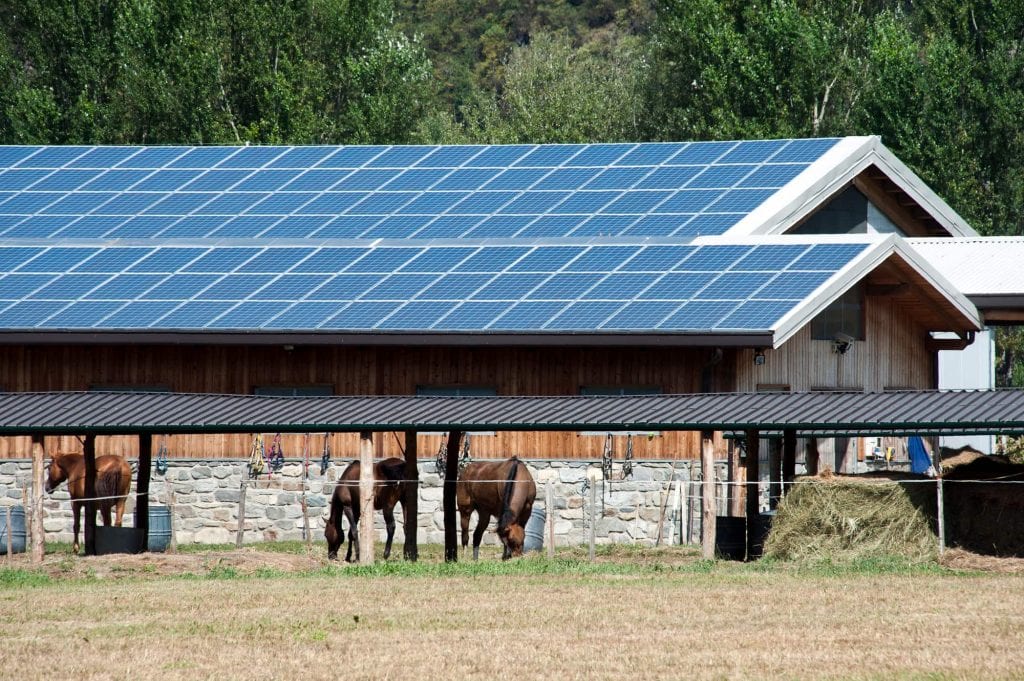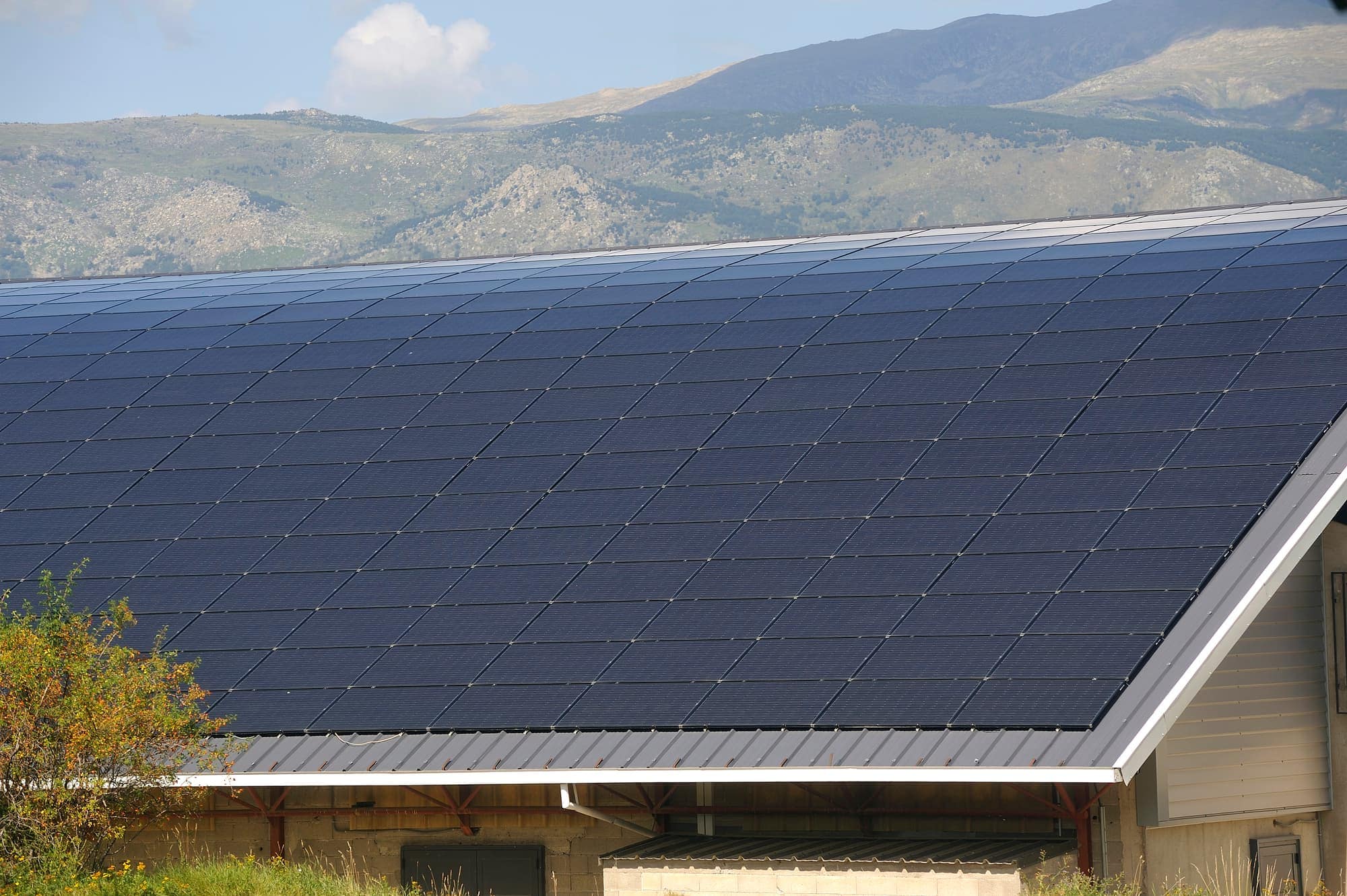Traditional materials like asphalt or concrete tiles come to mind when you think of roofing options. But with the rapid advancements in technology and the ever-growing emphasis on renewable energy, there’s a new contender on the block – the solar roof.
A harmonious blend of innovation and functionality, solar roofs are becoming an increasingly popular choice among homeowners looking for energy efficiency. Not only do they play a pivotal role in slashing energy bills, but they also offer a greener alternative to conventional power sources.
Are you curious about the ins and outs of solar roofing and contemplating whether it’s a suitable option for your home? If you’re considering moving to a property equipped with such a forward-thinking feature, consider starting your journey with eXp Realty and reading this guide.
What is a Solar Roof?
At its core, a solar roof is more than just a roof. Imagine a conventional roof but with the ability to generate electricity. That’s the essence of a solar roof. Instead of merely serving as a barrier against external elements like rain, wind, or snow, a solar roof elevates the purpose of the conventional roof.
It directly integrates photovoltaic panels or solar shingles – designed to harness sunlight’s immense power– into the roofing structure. This ensures a seamless and aesthetically pleasing appearance and turns the entire roof into a power generator.
How Does Solar Roofing Work?
If you’re wondering how a solar roof produces electricity, it’s quite the marvel of modern technology. These roofs employ solar cells embedded within the solar panels or solar roof tiles, often made from monocrystalline or polycrystalline silicon. When sunlight strikes these cells, a fascinating process begins.
Sunlight is made up of tiny particles known as photons. When these photons strike the solar cells, they dislodge electrons from their atoms. When these electrons pass over a circuit, they produce direct current (DC) electricity.
However, most homes and appliances run on alternating current (AC) electricity. So, before this DC electricity can be used, it goes through an inverter, transforming it into AC electricity. The result? Usable electricity that can either power your home appliances or be fed back into the grid, often leading to credits on your electricity bills.
The integration of solar technology into roofing materials, such as tiles or shingles, allows homeowners to maintain their home’s architectural style and aesthetics without the need for bulky solar panel installations.
The Benefits of Solar Roofs
A solar roof isn’t just about aesthetic appeal or technological marvel; it benefits homeowners and the environment.
Investing in solar roofing has many advantages, from making a positive impact on the environment to saving money. Let’s explore some of these benefits.

Environmental Advantages
The significance of renewable energy sources cannot be stressed enough, especially in today’s climate-conscious world. By opting for a solar roof, homeowners contribute to several environmental benefits:
- Reduction in Carbon Footprint: Every kilowatt-hour of solar energy produced reduces the need for conventional fossil fuel-based power. This means fewer carbon emissions, a primary cause of global warming. With a solar roof, homes transition towards a low-carbon future, aiding in the global fight against climate change.
- Lower Greenhouse Gas Emissions: Solar roof installations directly contribute to reducing greenhouse gas emissions. By harnessing the sun’s clean energy, we significantly reduce the demand for non-renewable energy sources notorious for emitting harmful gasses into the atmosphere.
Financial Advantages
While the environmental benefits are evident, solar roofs also make a lot of financial sense:
- Savings on Electricity Bills: One of the most immediate and tangible benefits of a solar roof is reducing electricity costs. As you generate your own solar electricity, dependence on the utility grid decreases, often dramatically lowering electric bills.
- Potential for Tax Incentives and Rebates: Governments and state agencies worldwide are encouraging the adoption of renewable energy. As a result, homeowners can avail of tax credits, rebates, and other financial incentives that significantly reduce the average cost of solar installations.
- The Federal Tax Credit: This is one such incentive that can cover a substantial portion of the installation costs.
Energy Independence and Resilience
With a solar roof, homeowners move towards greater energy autonomy:
- Protection Against Rising Energy Costs: Traditional energy prices can be unpredictable. With your source of energy production, you safeguard yourself against potential hikes in energy costs.
- Reliable Power During Grid Outages: Paired with energy storage solutions like home batteries, solar roofs can provide power even during grid disruptions.
- Increase in Property Value: Homes equipped with solar roofs often witness a rise in property value. As the demand for energy-efficient homes grows, properties with installed solar systems become increasingly attractive to potential buyers.
- Durability and Warranty: Leading solar products, such as the Tesla Solar Roof, come with a 25-year warranty, guaranteeing long-term performance. These roofs are designed to withstand harsh weather conditions, ensuring longevity.
- Aesthetically Pleasing: With products like solar shingles and solar tiles, homeowners no longer need to compromise on the aesthetic appeal of their homes. Solar roofs seamlessly integrate with the architectural design, offering an elegant solution without the bulkiness of traditional solar panel systems.
Considerations to Keep in Mind When Choosing Solar Roofing
Transitioning to a solar roof is undeniably beneficial for both the environment and your wallet. However, like any significant home improvement project, there are key considerations to account for before leaping.

Knowing these can help you navigate the process smoothly and maximize your solar investment.
Roof Suitability Assessment
Before considering any solar installation, it’s crucial to determine if your roof is suitable for adding solar panels or tiles.
If your current roof is nearing the end of its lifespan, it might be worth considering an entire roof replacement with integrated solar products. On the other hand, if your roof is relatively new, mounting solar panels might be more appropriate. Assessing the roof’s condition will also help you avoid potential future complications, ensuring the longevity of your solar system.
Roofing Material Compatibility With Solar Installation
Not all traditional roofing materials are conducive to solar installations. Traditional asphalt roofs are commonly compatible, but if you have a concrete tile roof or some sort of metal roofing, like a steel roofing tile, you’d want to consult with a roofing company and solar company to understand the installation implications. Additionally, the roof shape, slope, and orientation play a vital role in the solar system’s efficiency.
Financial Considerations
Investing in a solar roof requires a significant initial outlay, so it’s essential to understand the complete financial picture:
Initial Installation Cost and Budgeting
Beyond the cost of the solar products, the installation cost can vary based on the complexity of the project and the chosen solar company. Get multiple quotes, factor in potential upfront costs, and ensure it aligns with your budget.
Return on Investment (ROI) and Payback Period
While the initial investment might be high, the long-term energy savings can be substantial. Factor in energy bill savings, potential increases in property value, and available solar tax credits and rebates to calculate your ROI.
Energy Consumption and System Size
The efficiency and effectiveness of your solar roof will depend on tailoring the system to your home’s energy needs:
Analyze Energy Needs and Usage Patterns
Review your past electricity bills to understand your household’s energy requirements before deciding on the solar system’s size. This will help estimate the energy production you need from your solar roof.
Determine the Optimal Size of the Solar System
Once you’ve gauged your energy needs, work with a solar company to determine the system size that will most effectively meet those requirements, considering current and future consumption patterns.
Local Regulations and Permits
Legal frameworks can vary based on location, making it essential to familiarize yourself with local requirements:
Understand Zoning and Building Codes
Depending on your location, specific zoning regulations or building codes may be related to solar installations. For instance, homeowners in South Carolina might have different requirements than other states.
Navigate the Permit Application Process
Most solar installations require a permit. Engage with local authorities or your chosen solar company to understand the permitting process, ensuring your solar project adheres to all local regulations.
Maintenance and Long-Term Considerations
As with any significant home improvement project, transitioning to a solar roof doesn’t end at installation. Proper maintenance and understanding of the long-term implications can ensure you reap the benefits of your investment for years to come.
Regular Maintenance Tasks
Solar roofs are relatively low-maintenance. However, some routine tasks can keep the system running optimally:
- Cleaning: Depending on your location, dust, debris, or even snow can accumulate on your solar panels or solar roof tiles. Periodic cleaning ensures maximum power output and efficiency. Be cautious and consider hiring professionals, especially for steep roofs.
- Monitoring System Performance: Today’s solar systems have monitoring tools to check energy production and overall system health. Regularly checking this can help identify any potential issues or drops in performance early on.
Warranty Coverage and Repairs
Understanding your warranty and potential repair needs can save you from future hassles:
- Dealing with Potential Issues or Malfunctions: While solar modules are designed for durability, issues can arise. If you notice a significant drop in energy output or other abnormalities, contact your solar company for diagnostics and repairs.
- Lifespan and Replacement Considerations: Most solar products come with a 25-year warranty, whether it’s a power output warranty or a product warranty. However, the lifespan can often exceed this, with some performance degradation over time. Plan for potential replacements or upgrades, especially as solar technologies advance.
Key Takeaways
Embracing a solar roof is more than just an eco-friendly choice; it’s a testament to the future of clean energy and sustainable living. The numerous benefits range from significant energy savings and reduced electricity bills to substantially decreasing one’s carbon footprint.
The shift towards renewable energy sources, like solar power, is not just a trend but a necessary evolution to address the world’s growing energy demands sustainably. As you consider transitioning to a solar roof, remember the considerations and steps outlined in this guide, ensuring you make informed and effective decisions for your home.
To explore more on solar roofs or even properties for sale that come with it, contact a local eXp agent.
FAQs: Solar Roof
Given their increasing popularity and the constant advancements in solar technology, solar roofs naturally give rise to many questions. Here are answers to some frequently asked questions:
How much is a solar roof for a 2,000 square feet house?
The solar roof costs for a 2,000 square feet house varies based on location, specific solar products, and installation complexities. Considering products like the Tesla Solar Roof or a full roof replacement plus GAF solar shingle installation by GAF Energy, prices might range between $30,000 to $50,000 before incentives and tax credits. However, always get quotes specific to your circumstances before starting your solar energy journey.
Is a solar roof a good idea?
Absolutely. Solar roofs offer environmental benefits, like reduced carbon emissions, and financial advantages, such as energy savings and tax incentives. They can also increase property value and offer energy independence.
What is the disadvantage of a solar roof?
The most common disadvantages of a solar roof include the high initial installation cost, potential complexities based on roof shape or material, and the dependency on sunlight, meaning energy production can be variable.
Does a solar roof pay for itself?
In many cases, yes. With energy savings, increased property value, and available solar tax credits, the return on investment can mean the system pays for itself, typically between 5-10 years.
Is a Solar Roof cheaper than solar panels?
Solar roofs, which integrate solar cells into the roofing material, can sometimes be more expensive initially than traditional solar panel installation on an existing roof. However, if you’re considering a roof replacement, integrating solar can prove cost-effective in the long run. Always compare costs specific to your situation.
Is it cheaper to install solar on the roof or ground?
Roof installations are generally cheaper due to fewer required materials and groundwork. However, ground installations offer more flexibility for optimal sun positioning.
Does a solar roof reduce heat?
Yes, solar roofs can reduce heat absorption, often leading to cooler attic spaces and potentially lower cooling costs in warmer months.
Why don’t more people have solar roofs?
People hesitate to adopt solar roofs because of upfront costs, lack of awareness, regional sunlight variations, and aesthetic concerns.
How long can a house run on solar power alone?
Depending on system size, energy consumption, and storage capabilities, a house could run indefinitely on solar power alone, especially with battery backups for nighttime or cloudy days.
Is solar better in winter or summer?
Solar panels are typically more efficient in cooler temperatures. However, longer daylight hours in summer can lead to higher energy production, even if efficiency is reduced due to heat.





